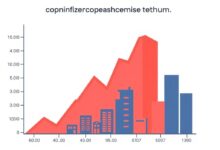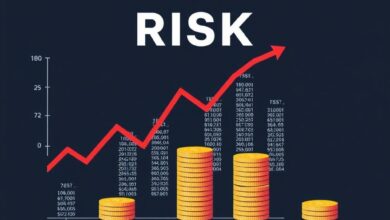What are ETFs and why are they so popular

If you’re looking for a way to enhance your investment strategy, consider index funds as a viable option. These funds provide an efficient approach to diversification, allowing you to spread your investments across various sectors without the need for extensive research on individual stocks.
By investing in these products, you can potentially achieve attractive returns with lower management fees compared to actively managed funds. This cost-effectiveness is one of the key drivers behind their rising appeal among both novice and seasoned investors.
Incorporating index funds into your portfolio can mitigate risks associated with market volatility while providing exposure to broad market trends. This blend of simplicity and effectiveness makes them an appealing choice for those aiming for long-term growth.
What Are ETFs?
Exchange-traded funds represent a dynamic investment vehicle, combining the benefits of traditional mutual funds with the flexibility of stock trading. They typically track an index, offering exposure to a diverse array of assets while maintaining lower expense ratios compared to actively managed funds.
Investors benefit from instant diversification through a single purchase, as these funds hold multiple securities. This allows for risk mitigation across various sectors, enhancing potential returns. Unlike index funds, which are traded at the end of the trading day, ETFs can be bought and sold throughout market hours, providing liquidity and price transparency.
Many investors appreciate ETFs for their tax efficiency due to their unique structure, which minimizes capital gains distributions. When considering investing in these instruments, evaluating underlying indices and associated costs is paramount. The choice between actively managed options or passive strategies can significantly influence overall performance and align with personal investment goals.
Benefits of Investing in ETFs
Consider allocating a portion of your portfolio to exchange-traded funds for their inherent advantages. These instruments offer low expense ratios compared to traditional mutual funds, allowing you to retain more of your investment returns. Index funds typically mirror market performance, providing exposure without the need for constant management.
Diversification stands out as a significant benefit, enabling investors to spread risk across various sectors and asset classes with minimal effort. A single ETF can encompass hundreds of stocks or bonds, reducing vulnerability to individual security fluctuations.
The liquidity factor cannot be overlooked; trading occurs throughout the day on exchanges, facilitating easy entry and exit points. This feature aligns well with active strategies while maintaining the simplicity associated with passive investing approaches.
Tax efficiency is another compelling reason. ETFs generally incur fewer capital gains taxes due to their unique structure, which allows for in-kind redemptions that minimize taxable events.
In summary, consider these factors: low costs, diversification benefits, liquidity, and tax efficiency when exploring opportunities in this investment vehicle. The strategic integration of ETFs into your financial plan can enhance growth potential and mitigate risks effectively.
Types of ETFs Explained
Consider sector ETFs for targeted investing. They focus on specific industries, such as technology or healthcare, allowing investors to capitalize on sector-specific trends.
- Equity ETFs: These track stock indices and offer broad exposure to the equity market. They are ideal for those seeking capital appreciation through diversified stock investments.
- Bond ETFs: Designed for fixed-income exposure, these funds invest in various bonds, providing a steady income stream while reducing individual bond risk.
- Commodity ETFs: Investing in physical goods like gold or oil, these funds can hedge against inflation and provide diversification away from traditional equities and bonds.
- International ETFs: For global exposure, these target foreign markets, enabling investors to diversify geographically and tap into emerging economies.
- Thematic ETFs: Focused on trends or themes (like renewable energy), these products allow investors to align their portfolios with personal values or future growth potential.
Selecting the right type can enhance returns while managing risk effectively. Consider your financial goals and risk tolerance when choosing among them.
How to Choose an ETF
Focus on the underlying index; selecting an ETF that tracks a well-known and reliable index can enhance potential returns. Popular indices like the S&P 500 or NASDAQ are often preferred due to their historical performance.
Expense ratios matter significantly. Look for ETFs with low expense ratios, as high fees can erode investment gains over time. Aim for funds that maintain expenses below 0.5% to maximize net returns.
Diversification is key in risk management. Opt for ETFs that offer broad exposure across different sectors or regions. A fund that holds a variety of assets minimizes the impact of poor performance in any single investment.
Examine liquidity. Higher trading volumes generally indicate better liquidity, which allows for easier buying and selling without significant price slippage. Check the average daily volume of an ETF before investing.
Investigate tracking error; this indicates how closely the ETF follows its benchmark index. Lower tracking errors suggest more precise replication of index returns, ensuring your investment aligns with its intended goals.
Consider your investment horizon. Long-term investors might prefer growth-oriented ETFs, while those seeking income may look at funds focused on dividends or bonds. Align your choice with personal financial objectives and timelines.
Finally, review tax implications related to distributions; some ETFs may generate capital gains distributions, impacting your overall tax liability. Choose funds designed to minimize taxable events if tax efficiency is a priority for you.
Future Trends in ETFs
Consider allocating a portion of your portfolio to thematic funds, which focus on specific industries like renewable energy or technology innovation. These investments are gaining traction as they offer targeted exposure and potential for high returns.
Another noteworthy trend is the rise of actively managed funds within this investment vehicle category. While traditional options track indexes, new strategies aim for alpha generation through strategic stock selection, enhancing diversification benefits for investors.
Sustainability-focused products are also becoming increasingly popular. As environmental, social, and governance (ESG) criteria gain importance among investors, funds emphasizing these attributes provide opportunities for long-term growth while aligning with ethical values.
Look out for advancements in technology that enhance trading efficiency. Innovations such as blockchain could streamline transaction processes and reduce costs associated with fund management.
Diverse product offerings will likely continue to expand into niche markets, providing unique opportunities for risk-adjusted returns. Keeping an eye on these developments can significantly benefit your investment strategy.






